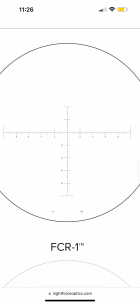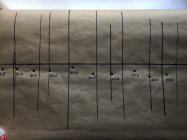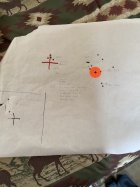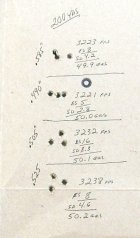Ajwilly96
Gold $$ Contributor
I’ve decided to do a ladder test for load development for my 223. This time around I have a 2ftx2ft target stand. I’m going to put white craft paper over it.
What would be a good mark for an aiming point? It will be shot with the NF FCR-1. I have some 4in round stickers, are these small enough that a slight difference in aiming point won’t skew the data? Any recommendations for a better aiming point?
Edit: forgot to add for my first test I’m going to be at 400yds
What would be a good mark for an aiming point? It will be shot with the NF FCR-1. I have some 4in round stickers, are these small enough that a slight difference in aiming point won’t skew the data? Any recommendations for a better aiming point?
Edit: forgot to add for my first test I’m going to be at 400yds
Attachments
Last edited:














